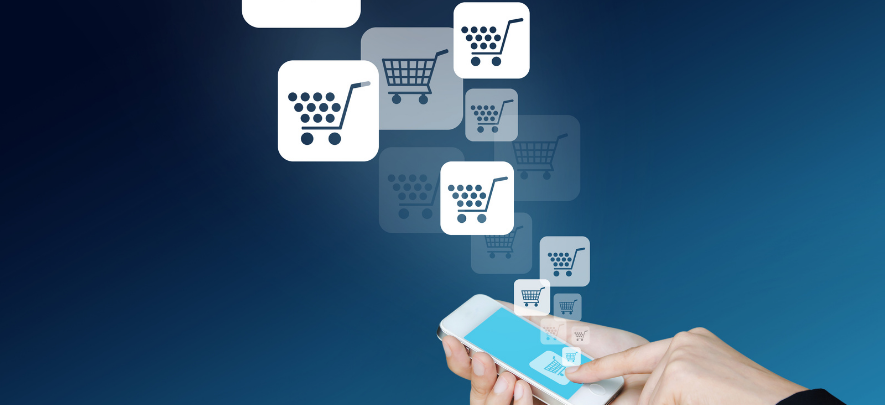The rise and rise of Ecommerce

Ecommerce
150 week ago — 6 min read
Even as the overall retail market shrunk 5% to USD 810 billion due to sustained lockdowns amid the COVID-19 pandemic, the Indian ecommerce market grew by 25% to reach USD 38 billion in FY 2020-21, according to a report by Bain & Co titled ‘How India Shops Online 2021’.
This surge came on the back of rapid digital adoption in the country due to the COVID-19 pandemic. Since the pandemic hit India, 30–35 million new customers began transacting online, taking the total online shopper base to 140 million and making India the third-largest in terms of e-retail shoppers globally, behind China and the US. Even after this massive surge, less than one-fourth of India’s internet user base of 625–675 million is shopping online, which means the market remains ‘massively untapped’. Bain & Co. also expects the market to grow at 25 to 30% annually over the next five years to reach USD 120-140 billion by FY 2026.
Amid the COVID-19 pandemic, the Indian ecommerce market grew by 25% to reach USD 38 billion in FY 2020-21, according to a report by Bain & Co titled ‘How India Shops Online 2021’.
This irreversible consumer adoption of ecommerce cannot be ignored. Retailers and brands need to adopt some form of an e-commerce strategy to not just survive but also thrive in this VUCA world of retail.
Proliferation
Speaking about the biggest consumer shift in the country, Rahul Khandelwal, AVP – Organised Trade, Godrej Consumer Products said, “Digital consciousness was growing in India.” Shoppers were either using digital as their primary mode of buying or were being influenced heavily by social media and the internet at large when making their purchasing decisions.
The pandemic fuelled the growth of ecommerce in India exponentially due to heavy restrictions by law enforcement and a shift in the consumer mindset. “The pandemic came with its set of headwinds and tailwinds. On one hand, formats like hypermarkets took a steep hit due to the restrictions imposed. On the other hand, there was a tailwind which erupted on the omnichannel and ecommerce side as people wanted convenience and safety,” stated Aditya Mittal, Head – Modern Trade, Kellogg India.
Omni-channel is here to stay and ecommerce is an important part of the same. According to Khandelwal, “We foresee more growth coming in from ecommerce going forward.” He also spoke about how retailers that have an omnichannel strategy have been generating 10 to 15% of their sales through digital.
Embracing the channel
The need to be online is being felt by small and large retailers alike. This is leading to a slew of interesting collaborations with third parties like Swiggy Instamart and Dunzo who offer technology and quick delivery.
“Ecommerce is actually helping the entire pie grow. It is helping the industry overall by pushing the brick-and-mortar stores to create even better experiences for their customers,” observed Mittal.
Adding, Khandelwal said, “Our research shows that because of ecommerce, average consumer spends are increasing. Digital is providing more occasions to buy while at the same time, giving people an option to spend on all those occasions.”
Shopping has become more contextual now than ever before. Every channel, every retailer, every product serves a particular purpose in today’s retail ecosystem. Consumers either seek value-driven offerings or unique offerings that are not available on any other channel and that’s why turn to ecommerce. To fulfil these needs of the shopper, most companies have started curating different brands, price points, packet mixes, and variants.
A lot of brands are launching ecommerce only or ecommerce first variants of their products or creating unique offerings as a test rollout for their nascent categories.
The rise of ecommerce, coupled with the effects of the pandemic have also given rise to several categories that might not have received the same level of attention in the past like herbal products.
A lot of brands are launching ecommerce only or ecommerce first variants of their products or creating unique offerings as a test rollout for their nascent categories as well as their non-KVIs (Known Value Items) which also adds to their topline significantly.
Technological advancements had been pushing the ecommerce adoption needle gradually for the last two decades, but the pandemic brought in a sporadic shift. Ecommerce as a percentage of retail sales in 2020 was just 7% in India which is minuscule when compared to developed markets like the United States and China. There is immense room for growth, and the growth is inevitable.
Also read: A step-by step-guide to creating your own eStore with GlobalLinker
Article & image source: STOrai Magazine.
Disclaimer: The views and opinions expressed in this article are those of the author and do not necessarily reflect the views, official policy or position of GlobalLinker.
Network with SMEs mentioned in this article
View STOrai 's profile
Other articles written by STOrai Magazine
The Art & Science of People Pleasing in Retail
10 week ago
Most read this week
Trending













Comments (1)
Share this content
Please login or Register to join the discussion